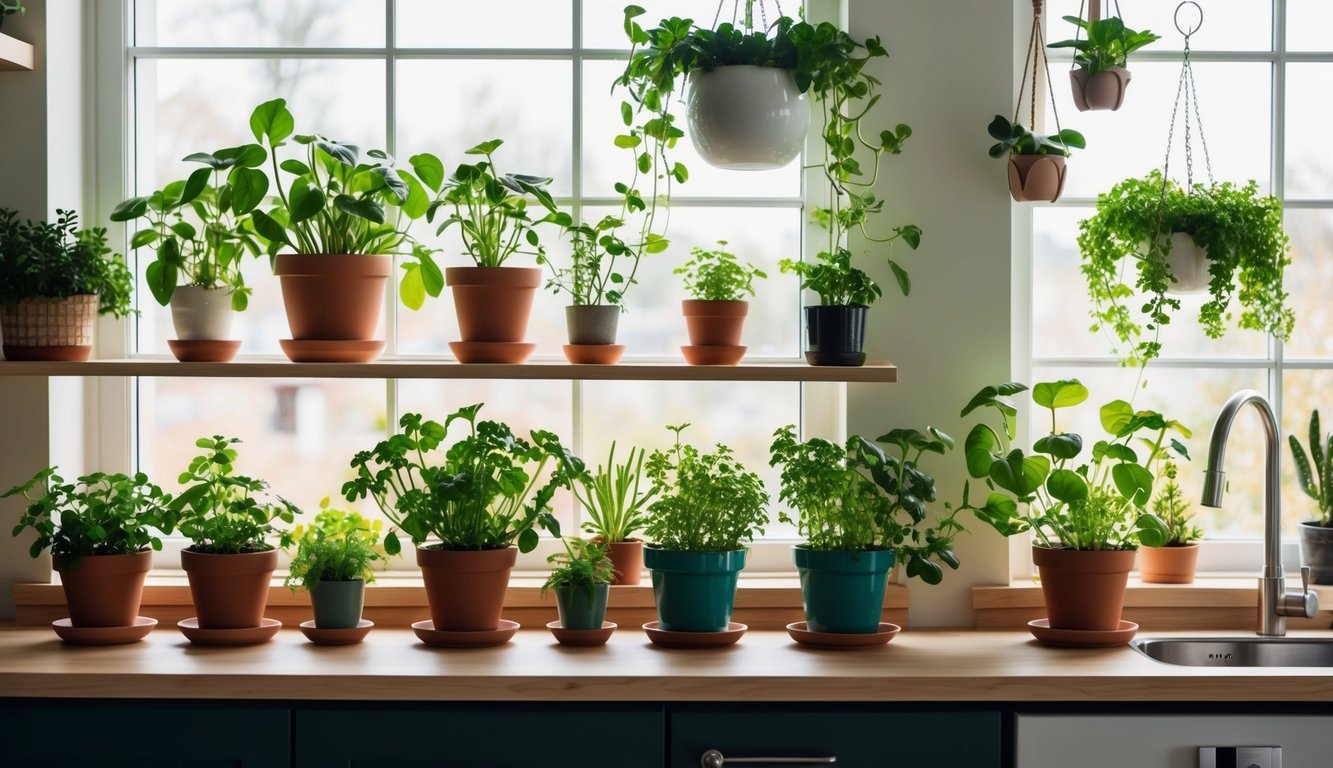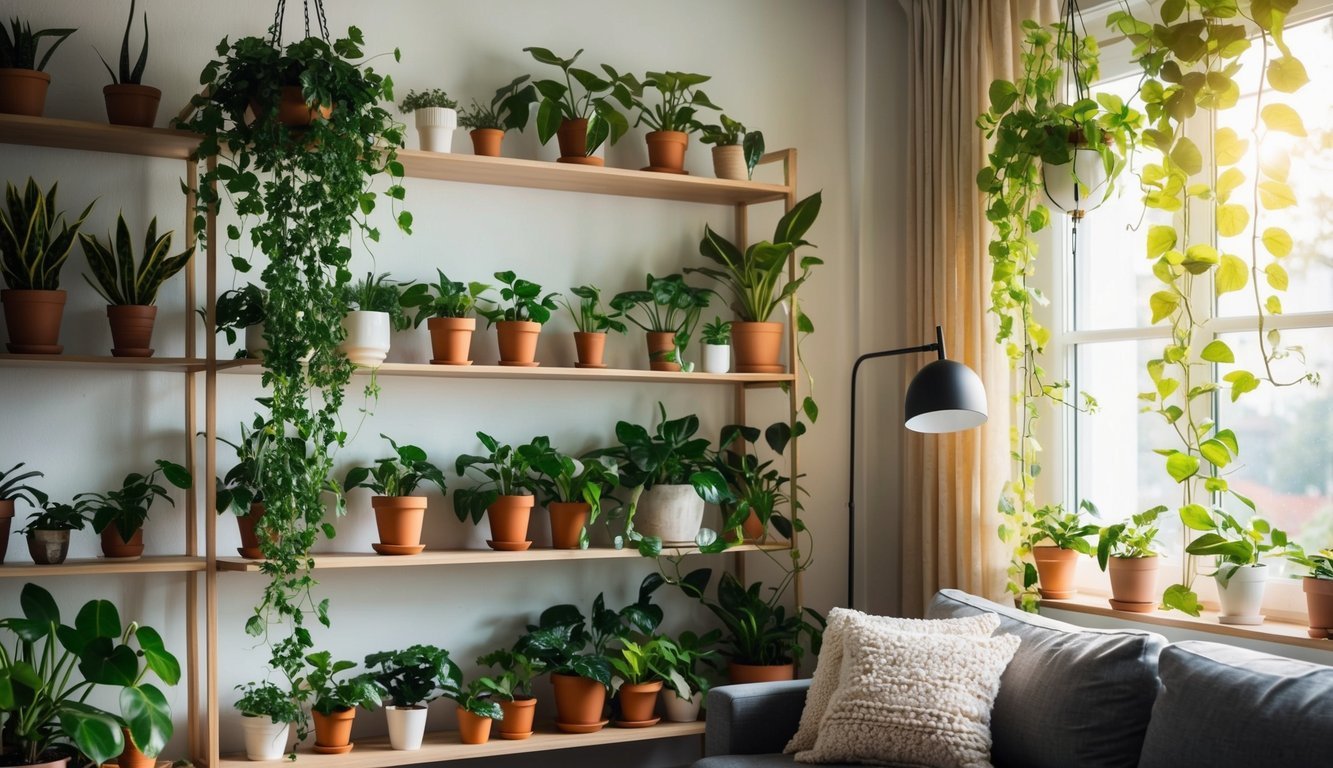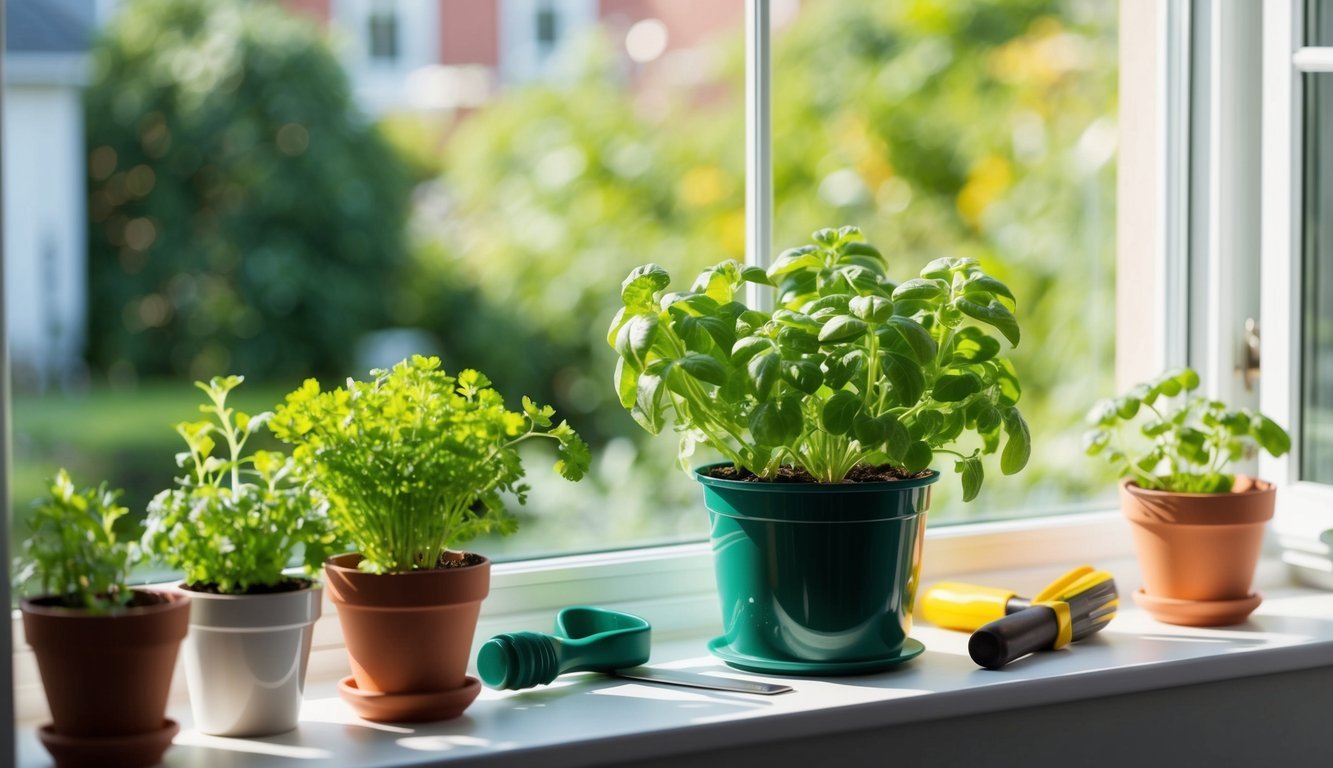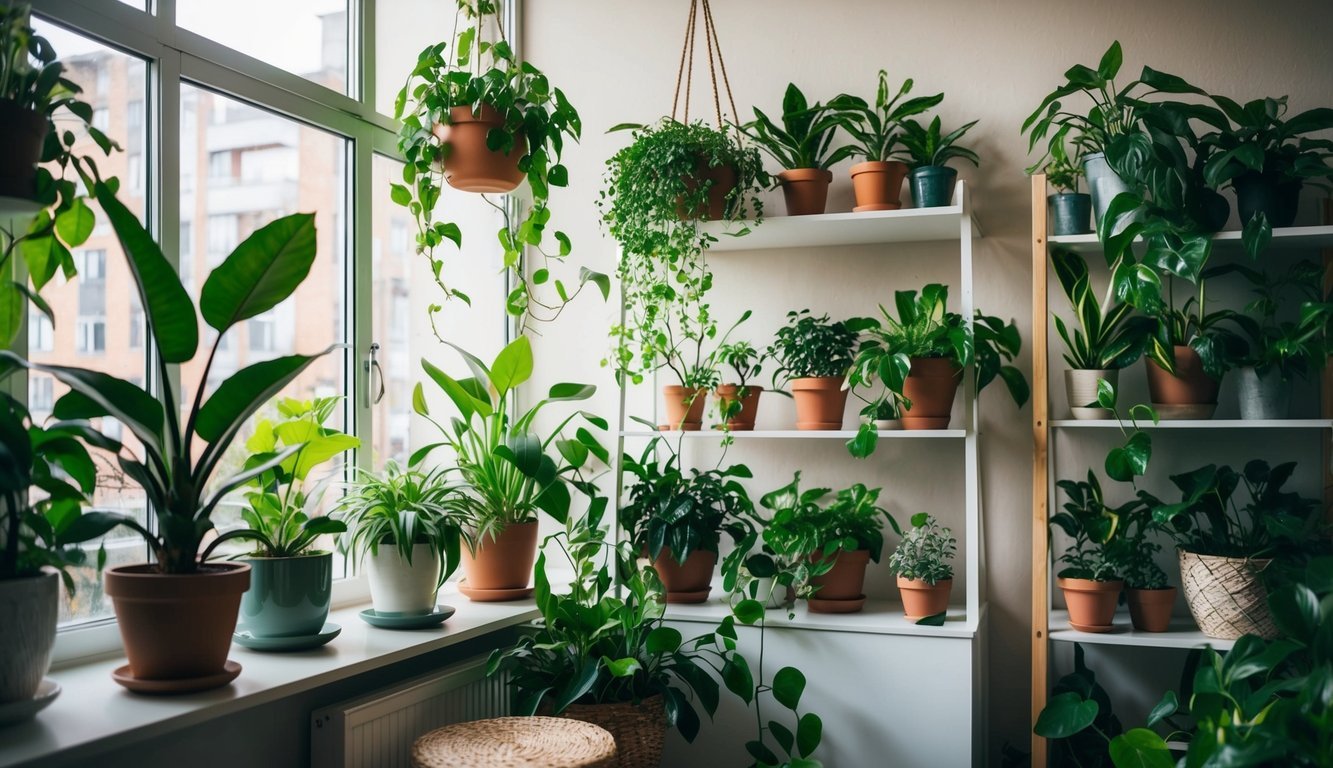I love finding ways to bring more greenery into my small space.
It’s amazing how a little bit of nature can change the vibe of a room or a balcony. Creating a lush environment in limited areas is easier than you might think.

With just a few creative tricks, I can transform my space into a green oasis.
Whether I’m working with tiny corners or maximizing outdoor patios, there are plenty of options to explore.
Vertical Garden Planters
I’ve found that vertical garden planters are a game changer for small spaces.
They allow me to maximize my gardening area without taking up too much room.
Plus, they add a unique look to my home.
Using wall-mounted planters is a practical way to introduce greenery indoors or outdoors.
I can easily plant herbs, flowers, or even small vegetables, bringing life to dull walls.
The great thing about these planters is that they come in various styles, so I can choose what fits my space best.
I also love the idea of upcycled materials.
Creating a vertical garden from old palettes or containers not only helps the environment but adds character to my garden.
It feels rewarding to transform unused items into something beautiful and functional.
Hanging planters are another favorite of mine.
They can be placed near windows or in corners that usually get overlooked.
This simple trick instantly brightens up the area while making it feel more alive.
String of Pearls

I love having String of Pearls (Senecio peregrinus) in my small space.
Their trailing vines and bead-like leaves bring a unique touch to any room.
They really do stand out in a compact area.
These plants thrive in bright, indirect sunlight.
I usually place mine near a window, but I make sure to avoid direct sun, which can scorch the leaves.
They enjoy warm temperatures, ideally between 70 to 80°F (21 to 27°C).
Watering is crucial but must be done carefully.
I let the soil dry out completely between waterings.
This prevents root rot, which is a common issue with succulents.
Good air circulation is another key factor.
I often open a window or use a small fan to keep the air moving.
This helps maintain a healthy environment for my String of Pearls.
Repotting is also a breeze when the time comes.
I water it a day before to loosen the roots, which makes the process easier.
With just a bit of care, my String of Pearls continues to flourish and adds a lovely green vibe to my home.
3) Hanging Wall Vases
I love the idea of using hanging wall vases to bring greenery into my small space.
They’re perfect for adding a bit of life without taking up valuable floor space.
Plus, they can act as unique décor pieces, showcasing my favorite plants.
To create a beautiful display, I often mix different sizes and shapes of vases.
This adds visual interest and allows me to experiment with various plant types.
It’s amazing how even a single trailing plant can transform a blank wall.
I find that these vases can easily fit into any room.
Whether in the kitchen, living room, or even a bathroom, they bring a fresh touch.
Using wall vases is also a great way to show off smaller plants I might not have room for on a shelf.
Setting them up is usually simple, too.
I can use a few basic supplies or even opt for ready-made kits that come with everything I need.
Not only do they save space, but they also bring a sense of height to the room.
Fiddle Leaf Fig
I love adding a Fiddle Leaf Fig to my small space.
Their large, glossy leaves make a bold statement without taking up too much room.
Plus, they thrive with a little attention.
When choosing a spot, I find indirect sunlight works best.
These plants enjoy warmth and can adapt to typical indoor conditions.
Just make sure not to expose them to drafts or extreme temperature changes.
Watering is key.
I always use room temperature water and ensure the soil is evenly moist.
After watering, I empty any excess water from the tray to prevent root rot.
Fertilizing is also essential for growth.
A balanced liquid fertilizer, diluted to half strength, is what I use every four to six weeks.
This keeps my plant healthy and vibrant.
Lastly, repotting is a great way to refresh my Fiddle Leaf Fig.
I choose a slightly larger pot with good drainage as it grows.
This helps it stay happy and thriving in my space.
5) Window Herb Garden Kit

When I started my small space garden, I found a window herb garden kit to be a game changer.
These kits come with everything you need, making it easy to cultivate herbs right on my windowsill.
Most kits include pots, soil, and a variety of seeds.
I especially love the ones that feature organic seeds for basil, cilantro, and oregano.
It’s fantastic to have fresh herbs available for cooking right at my fingertips.
Setting up is simple.
I just fill the pots with soil, plant the seeds, and give them a good watering.
Some kits even come with a protective drip tray to catch any excess water.
Another perk is that they fit perfectly in small spaces.
I place mine in a sunny spot, and they thrive.
Watching them grow is satisfying, and I enjoy the greenery they add to my space.
Plus, it’s rewarding to use my homegrown herbs in meals.
Understanding Your Space
To make the most of my small space for gardening, I first need to understand its unique features.
Evaluating light conditions and assessing available surface areas are essential steps in choosing the right plants and arrangements for my home.
Evaluating Light Conditions
Light is a crucial factor in determining what plants will thrive in my space.
I start by observing how much natural light different areas receive throughout the day.
I can categorize my spaces based on light availability:
- Bright, Direct Sunlight (6+ hours): Ideal for sun-loving plants like tomatoes and herbs.
- Partial Shade (3-6 hours): Great for a mix of leafy greens or flowers that require less direct light.
- Low Light (1-3 hours): Perfect for hardy plants such as snake plants or pothos.
Taking notes on where the light falls at various times can help me decide where to place my plants for optimal growth.
Assessing Available Surface Areas
Next, I look at all the surfaces in my space where I can add greenery.
This includes floors, shelves, tables, and even walls.
Here are a few options I consider:
-
Vertical Spaces: Wall-mounted planters or shelves can maximize area by drawing the eye upwards.
-
Countertops and Tables: Using decorative pots on surfaces can make a big impact without taking up too much room.
-
Window Sills: If they get adequate light, these spaces are perfect for herbs and small plants.
By strategically using every available surface, I can create an inviting green oasis without feeling cramped.
Creative Plant Placement

Finding innovative ways to place plants in a small space can transform the area into a lively and inviting environment.
By taking advantage of vertical space and incorporating greenery in unexpected spots, I can maximize my living area while adding a touch of nature.
Utilizing Vertical Space
I love using vertical space to showcase my plants.
By hanging plants from the ceiling or using wall-mounted planters, I can create a beautiful display without sacrificing floor space.
Some great options include:
- Macrame hangers for a boho vibe.
- Wall shelves to create a miniature garden effect.
- Vertical gardens made with pocket planters or trellises.
These methods add depth and interest to my space.
For larger plants, placing them atop tall furniture keeps them visible without cluttering surfaces.
It’s a clever way to elevate my plant game while making the room feel more expansive.
Incorporating Plants in Unusual Spots
I enjoy getting creative with plant placement by using unconventional locations.
Think about areas that typically go unnoticed but can accommodate small plants.
Examples of these spots can include:
- Windowsills for herbs or small succulents.
- Bathroom countertops, where humidity benefits my plants.
- Bookshelves, mixing plants with books and decor for visual appeal.
Even a corner nook can feature a small plant.
By experimenting with various locations, I can find unique ways to incorporate greenery.
This approach adds character and liveliness to my space while being practical and fun.

